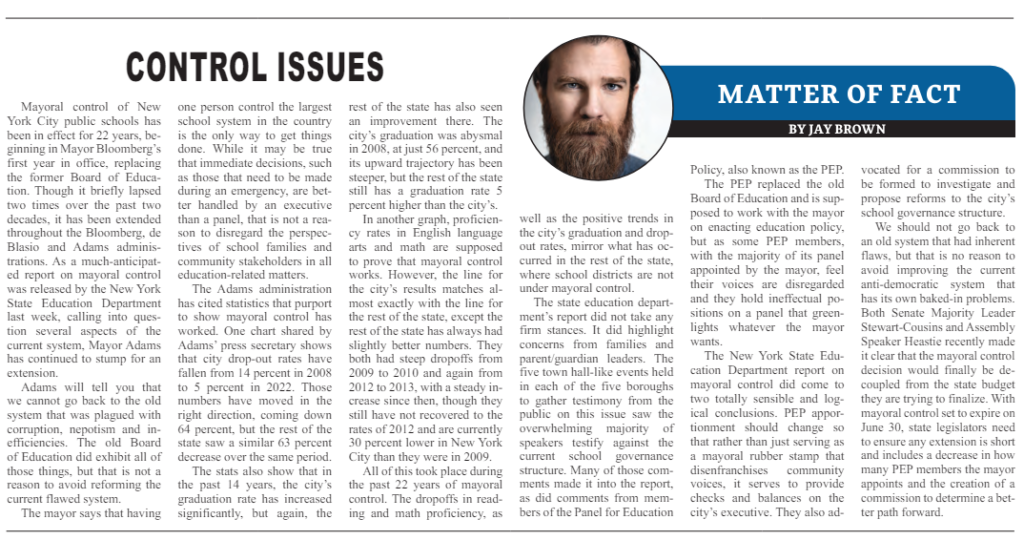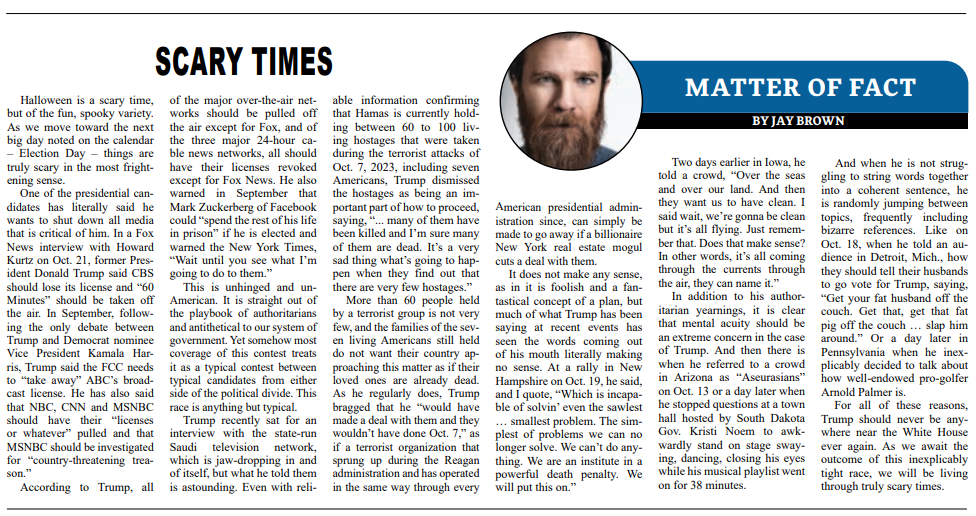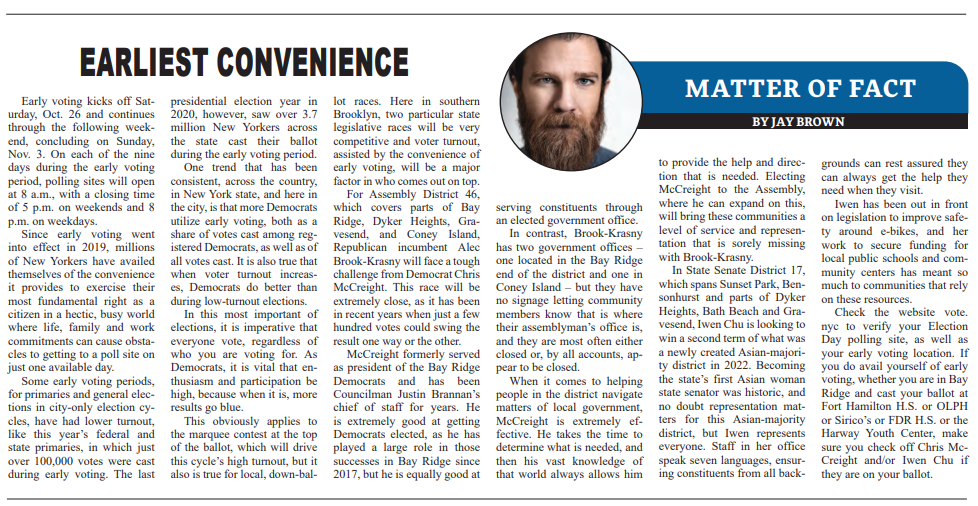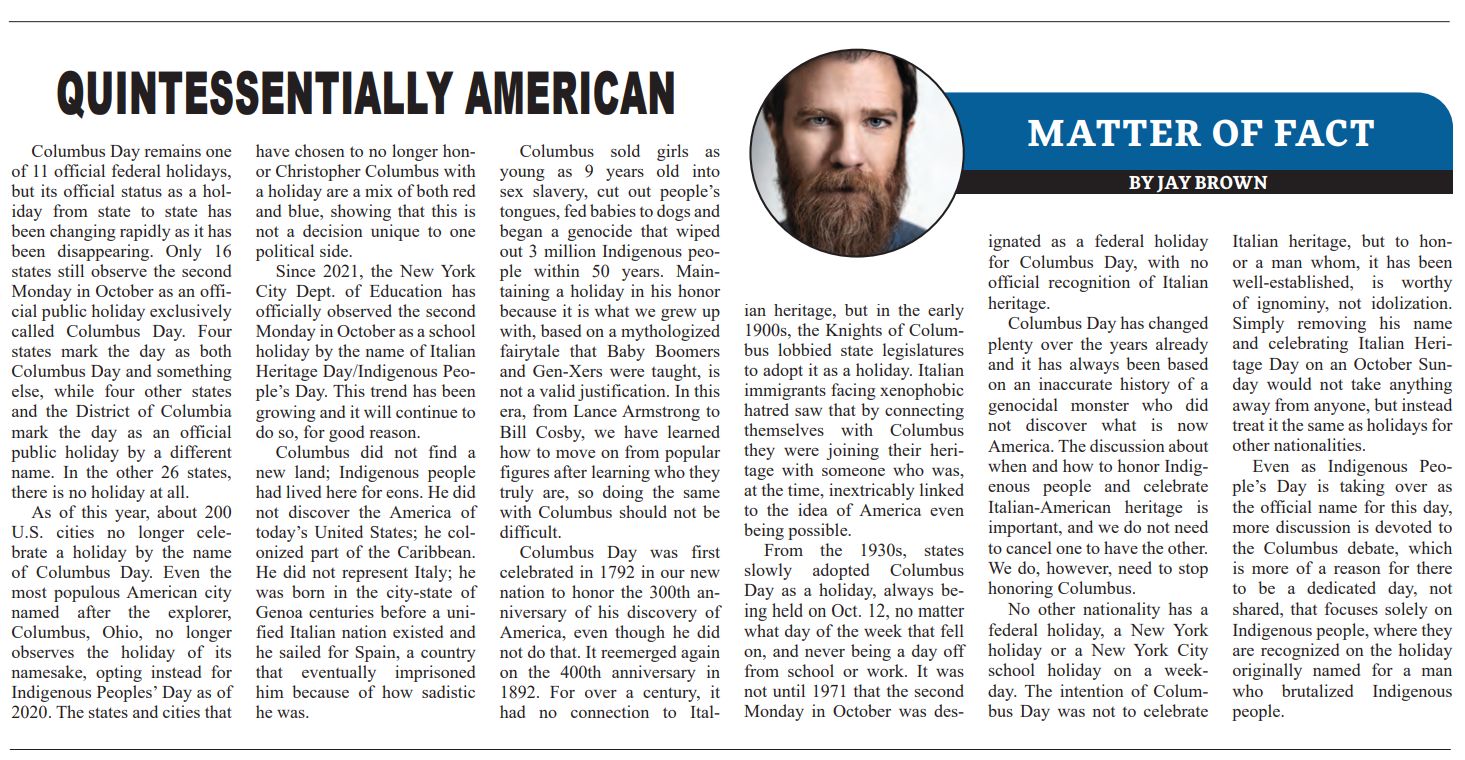A version of this column, from the weekly opinion piece MATTER OF FACT, first appeared on BrooklynReporter.com, the Home Reporter and Spectator dated April 19, 2024

Mayoral control of New York City public schools has been in effect for 22 years, beginning in Mayor Bloomberg’s year in office, replacing the former Board of Education. Though it briefly lapsed two times over the past two decades, it has been extended throughout the Bloomberg, de Blasio, and Adams administrations. As a much-anticipated report on mayoral control was released by the New York State Education Department two weeks ago, calling into question several aspects of the current system, Mayor Adams continued to stump for an extension.
Adams will tell you that we cannot go back to the old system that was plagued with corruption, nepotism, and inefficiencies. The old Board of Education did exhibit all of those things, but that is not a reason to avoid reforming the current flawed system.
The mayor says that having one person control the largest school system in the country is the only way to get things done. While it may be true that immediate decisions, such as those that need to be made during an emergency, are better handled by an executive than a panel, that is not a reason to disregard the perspectives of school families and community stakeholders in all education-related matters.
The Adams administration has cited statistics that purport to show mayoral control has worked. One chart shared by Adams’ press secretary shows that city drop-out rates have fallen from 14 percent in 2008 to 5 percent in 2022. Those numbers have moved in the right direction, coming down 64 percent, but the rest of the state saw a similar 63 percent decrease over the same period.
The stats also show that in the past 14 years, the city’s graduation rate has increased significantly, but again, the rest of the state has also seen an improvement there. The city’s graduation was abysmal in 2008, at just 56 percent, and its upward trajectory has been steeper, but the rest of the state still has a graduation rate 5 percent higher than the city’s.
In another graph, proficiency rates in English language arts and math are supposed to prove that mayoral control works. However, the line for the city’s results matches almost exactly with the line for the rest of the state, except the rest of the state has always had slightly better numbers. They both had steep dropoffs from 2009 to 2010 and again from 2012 to 2013, with a steady increase since then, though they still have not recovered to the rates of 2012 and are currently 30 percent lower in New York City than they were in 2009.
All of this took place during the past 22 years of mayoral control. The dropoffs in reading and math proficiency, as well as the positive trends in the city’s graduation and drop-out rates that mirror what has occurred in the rest of the state, where school districts are not under mayoral control.
The state education department’s report did not take any firm stances. It did highlight concerns from families and parent/guardian leaders. The five town hall-like events held in each of the five boroughs to gather testimony from the public on this issue saw the overwhelming majority of speakers testify against the current school governance structure. Many of those comments made it into the report, as did comments from members of the Panel for Education Policy, also known as the PEP.
The PEP replaced the old Board of Education and is supposed to work with the mayor on enacting education policy, but as some PEP members spoke to, with the majority of its panel appointed by the mayor, they feel their voices are disregarded and they hold ineffectual positions on a panel that greenlights whatever the mayor wants.
The New York State Education Department report on Mayoral Control did come to two totally sensible and logical conclusions. PEP apportionment should change so that rather than just serving as a mayoral rubber stamp that disenfranchises community voices, it serves to provide checks and balances on the city’s executive. They also advocated for a commission to be formed to investigate and propose reforms to the city’s school governance structure.
We should not go back to an old system that had inherent flaws, but that is no reason to avoid improving the current anti-democratic system that has its own baked-in problems. Both Senate Majority Leader Stewart-Cousins and Assembly Speaker Heastie made it clear earlier this month that the mayoral control decision would finally be decoupled from the state budget they were trying to finalize. With mayoral control set to expire on June 30, state legislators should have ensured any extension was short and included a decrease in how many PEP members the mayor appoints, along with the creation of a commission to determine a better path forward.
Just after this column was published in print, a budget deal was finalized and mayoral control was added back in at the eleventh hour. Mayor Adams received a two-year extension and will still maintain a majority of PEP appointments. The supposed concessions were that the chair of the PEP would now be selected by the mayor from a shortlist created by elected leaders in Albany and the New York City DOE would make more firm commitments to adhering to the state class size law they and Adams have been testing.
The reality is, Adams will still likely have a PEP chair he is comfortable with and, even if he is not, those who vote the way he wants them to will have an even wider majority on the votes the PEP takes. With respect to the class size law, a few days after his supposed commitment to adhere to the mandates, Adams released his executive budget proposal, which included cuts to teacher headcounts over the next few years, which is the exact opposite of what will be needed in order to comply with class size requirements.
Governor Hochul said that she insisted mayoral control be put back into the budget so “It will not be a political football for the next few months,” but by again having it used as a bargaining chip in the mega piece of fiscal legislation, it was just that, rather than having the opportunity to stand on its own. In the end, Adams got what he wants, making what appears to be a disingenuous commitment and the State Education Department’s report was never considered and there will be no commission to study the next way forward for New York City schools ahead of mayoral control’s expiration in two years, when we will undoubtedly go through all of this again at the last minute.



